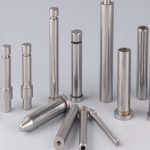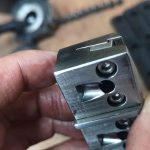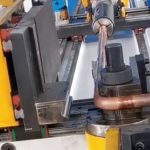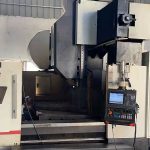Simply put, the difference between annealing and tempering is that annealing means that hardness is not required, and tempering still retains a certain degree of hardness.
Tempering:
The structure obtained by high temperature tempering is tempered sorbite. Tempering is generally not used alone. After the parts are quenched, the main purpose of tempering is to eliminate the quenching stress and obtain the required structure. Tempering is divided into low temperature, medium temperature and high temperature tempering according to the tempering temperature. Respectively get tempered martensite, troostite and sorbite.
Among them, the heat treatment combined with high temperature tempering after quenching is called quenching and tempering treatment, and its purpose is to obtain comprehensive mechanical properties with good strength, hardness, plasticity and toughness. Therefore, it is widely used in important structural parts of automobiles, tractors, machine tools, etc., such as connecting rods, bolts, gears and shafts. The hardness after tempering is generally HB200-330.
Annealing:
The pearlite transformation occurs in the annealing process. The main purpose of annealing is to make the internal structure of the metal reach or close to the equilibrium state, in preparation for subsequent processing and final heat treatment.
Stress-relief annealing is an annealing process to eliminate residual stress caused by plastic deformation processing, welding, etc. and the residual stress in the casting. There are internal stresses in the workpiece after forging, casting, welding and cutting. If it is not eliminated in time, the workpiece will be deformed during processing and use, which will affect the accuracy of the workpiece. It is very important to use stress relief annealing to eliminate internal stress generated during processing.
The heating temperature of stress relief annealing is lower than the phase transition temperature, therefore, no structural transformation occurs during the entire heat treatment process. The internal stress is mainly eliminated naturally by the workpiece in the process of heat preservation and slow cooling.
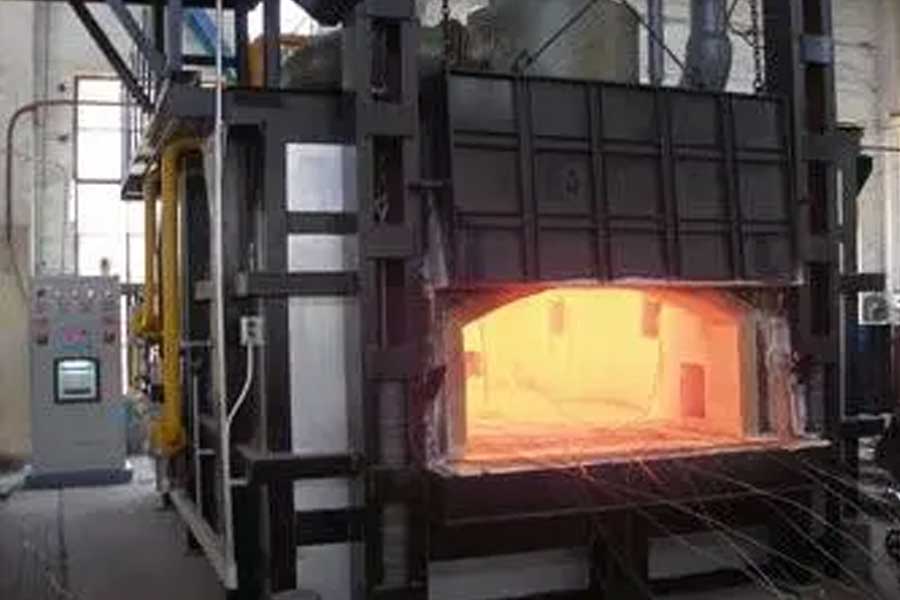
In order to eliminate the internal stress of the workpiece more thoroughly, the heating temperature should be controlled during heating. Generally, it enters the furnace at a low temperature, and then heats to the specified temperature at a heating rate of about 100°C/h. The heating temperature of the welded parts should be slightly higher than 600℃. The holding time depends on the situation. If you want to learn UG programming in Q group 304214709, it can help you, usually 2-4h. The holding time of stress relief annealing for castings is taken as the upper limit, the cooling rate is controlled at (20-50) ℃/h, and it can be air-cooled after cooling to below 300 ℃. The aging treatment can be divided into two types: natural aging and artificial aging. Natural aging is to place the castings in the open field for more than half a year, and it will occur slowly, thereby eliminating or reducing residual stress. Artificial aging is heating the castings to 550-650 ℃ for stress relief annealing, it saves time than natural aging, and the residual stress removal is more thorough.
What is tempering?
Tempering is a heat treatment process in which the quenched metal material or part is heated to a certain temperature, kept for a certain period of time, and then cooled in a certain way. Tempering is an operation that is performed immediately after quenching, and is usually the last part of the heat treatment of the workpiece. A process, so the combined process of quenching and tempering is called final heat treatment.
The main purposes of quenching and tempering are: 1) Reduce internal stress and reduce brittleness. Quenched parts have great stress and brittleness. If they are not tempered in time, they will tend to deform or even crack. 2) Adjust the mechanical properties of the workpiece. After quenching, the workpiece has high hardness and high brittleness. In order to meet the different performance requirements of various workpieces, it can be adjusted by tempering, hardness, strength, plasticity and toughness. 3) Stabilize the size of the workpiece. The metallographic structure can be stabilized by tempering to ensure that no deformation occurs in the future use process. 4) Improve the cutting performance of certain Alloy steels.
In production, it is often based on the performance requirements of the workpiece. According to the different heating temperature, tempering is divided into low temperature tempering, medium temperature tempering, and high temperature tempering.
The heat treatment process of quenching and subsequent high temperature tempering is called quenching and tempering, which means that it has high strength and good plastic toughness. Mainly used for processing machine structural parts with larger loads, such as machine tool spindles, automobile rear axle axles, powerful gears, etc.
What is quenching? Quenching is a heat treatment process that heats the metal material or parts to above the phase transition temperature, and after holding it, it is rapidly cooled at a rate greater than the critical cooling rate to obtain the martensite structure.
Quenching is to obtain the martensite structure, and then after tempering, the workpiece can obtain good performance in order to give full play to the potential of the material. Its main purpose is: 1) To improve the mechanical properties of metal materials or parts. For example: improve the hardness and wear resistance of tools, bearings, etc., improve the elastic limit of springs, and improve the comprehensive mechanical properties of shaft parts. 2) Improve the material properties or chemical properties of some special steels. Such as improving the corrosion resistance of stainless steel and increasing the permanent magnetism of magnetic steel. When quenching and cooling, in addition to the reasonable selection of quenching media, there must be a correct quenching method. Commonly used quenching methods include single-liquid quenching, two-liquid quenching, graded quenching, austempering, and partial quenching.
What are the differences and connections between normalizing, annealing, quenching and tempering?
Normalizing has the following purposes and uses.
① For hypoeutectoid steels, normalizing is used to eliminate the overheated coarse-grained structure and Widmanstatten structure of cast, forging, and weldments, and the band-like structure in rolled materials; refine grains; and can be used as a pre-heat treatment before quenching.
②For hypereutectoid steel, normalizing can eliminate the network secondary cementite and refine the pearlite, which not only improves the mechanical properties, but also facilitates the subsequent spheroidizing annealing.
③For low-carbon deep-drawing thin steel sheets, normalizing can eliminate the free cementite in the grain boundary to improve its deep-drawing performance.
④For low-carbon steel and low-carbon low-alloy steel, normalizing can be used to obtain more flake pearlite structure, increase the hardness to HB140-190, avoid the “sticky knife” phenomenon during cutting, and improve the machinability . For medium carbon steel, it is more economical and convenient to use normalizing when both normalizing and annealing are available.
⑤ For ordinary medium carbon structural steels, where the mechanical properties are not high, normalizing can be used instead of quenching and high temperature tempering, which is not only easy to operate, but also stable in structure and size.
⑥High temperature normalizing (150-200℃ above Ac3) due to the high diffusion rate at high temperature, can reduce the composition segregation of castings and forgings. The coarse grains after high temperature normalization can be refined by a second lower temperature normalization.
⑦For some low- and medium-carbon alloy steels used in steam turbines and boilers, normalizing is often used to obtain bainite structure, and then after high temperature tempering, it has good creep resistance at 400-550℃.
⑧ In addition to steel parts and steel materials, normalizing is also widely used in the heat treatment of ductile iron to obtain a pearlite matrix and improve the strength of ductile iron. Since the characteristic of normalizing is air cooling, the ambient temperature, stacking method, airflow and workpiece size all affect the organization and performance after normalizing.
The normalizing structure can also be used as a classification method for alloy steel. Generally, alloy steels are divided into pearlite steel, bainite steel, martensitic steel and austenitic steel according to the structure obtained by heating a sample with a diameter of 25 mm to 900°C and air cooling.
Annealing is a metal heat treatment process that slowly heats the metal to a certain temperature, keeps it for a sufficient time, and then cools it at an appropriate speed. Annealing heat treatment is divided into complete annealing, incomplete annealing and stress relief annealing.
The mechanical properties of annealed materials can be tested by tensile test or hardness test. Many steels are supplied in annealed heat treatment state. The hardness of steel can be tested by Rockwell hardness tester to test HRB hardness. For thinner steel plates, steel strips and thin-walled steel pipes, the surface Rockwell hardness tester can be used to test HRT hardness. .
The purpose of annealing is to:
①Improve or eliminate various structural defects and residual stresses caused by steel casting, forging, rolling and welding, and prevent deformation and cracking of the workpiece.
②Soften the workpiece for cutting.
③ Refine the grains and improve the structure to improve the mechanical properties of the workpiece.
④ Prepare the organization for the final heat treatment (quenching, tempering).
Commonly used annealing processes are:
① Complete annealing. It is used to refine the coarse superheated structure with poor mechanical properties after casting, forging and welding of medium and low carbon steel. Heat the workpiece to 30-50°C above the temperature at which all ferrite is transformed into austenite, hold it for a period of time, and then slowly cool down with the furnace. During the cooling process, the austenite transforms again, which can change the structure of the steel. thin.
② Spheroidizing annealing. Used to reduce the high hardness of tool steel and bearing steel after forging. The workpiece is heated to 20-40°C above the temperature at which the steel begins to form austenite, and then slowly cooled after holding the temperature. During the cooling process, the lamellar cementite in the pearlite becomes spherical, thereby reducing the hardness.
③ Isothermal annealing. It is used to reduce the high hardness of some alloy structural steels with higher nickel and chromium content for cutting. Generally, it is first cooled to the most unstable temperature of austenite at a relatively rapid rate, and after holding for a proper time, the austenite is transformed into troostite or sorbite, and the hardness can be reduced.
④ Recrystallization annealing. It is used to eliminate the hardening phenomenon (increase in hardness and decrease in plasticity) of metal wire and sheet during cold drawing and cold rolling. The heating temperature is generally 50-150℃ below the temperature at which the steel begins to form austenite. Only in this way can the work hardening effect be eliminated and the metal can be softened.
⑤ Graphitization annealing. It is used to make cast iron containing a large amount of cementite into malleable cast iron with good plasticity. The process operation is to heat the casting to about 950°C, keep it for a certain period of time and then cool it appropriately to decompose the cementite to form flocculent graphite.
⑥ Diffusion annealing. It is used to homogenize the chemical composition of alloy castings and improve its performance. The method is to heat the casting to the highest possible temperature under the premise of not melting, and keep it for a long time, and slowly cool down after the diffusion of various elements in the alloy tends to be evenly distributed.
⑦ Stress relief annealing. It is used to eliminate the internal stress of steel castings and welded parts. For steel products, the temperature at which austenite begins to form after heating is 100-200℃, and the internal stress can be eliminated by cooling in the air after heat preservation.
Quenching, a heat treatment process for metals and glass. The alloy product or glass is heated to a certain temperature, and then rapidly cooled in water, oil or air, which is generally used to increase the hardness and strength of the alloy. Commonly known as “dip fire”. The quenched workpiece is reheated to an appropriate temperature lower than the lower critical temperature, and the metal is cooled in air, water, oil and other media after heat preservation for a period of time.
After quenching, steel workpieces have the following characteristics:
① Unbalanced (ie unstable) structures such as martensite, bainite, and retained austenite are obtained.
② There is a large internal stress.
③ The mechanical properties cannot meet the requirements. Therefore, steel workpieces are generally tempered after quenching. The effects of tempering are:
①Improve the stability of the organization, so that the structure of the workpiece no longer changes during use, so that the geometric size and performance of the workpiece remain stable.
② Eliminate internal stress in order to improve the performance of the workpiece and stabilize the geometric size of the workpiece.
③Adjust the mechanical properties of steel to meet the requirements of use.
The reason why tempering has these effects is that when the temperature rises, the atomic activity increases, and the atoms of iron, carbon and other alloying elements in the steel can diffuse faster to realize the rearrangement and combination of atoms, which makes it unstable The unbalanced organization gradually transformed into a stable, balanced organization. The elimination of internal stress is also related to the decrease in metal strength when the temperature rises. When general steel is tempered, the hardness and strength decrease, and the plasticity increases. The higher the tempering temperature, the greater the change in these mechanical properties. Some alloy steels with higher content of alloying elements will precipitate some fine particles of metal compounds during tempering in a certain temperature range, which will increase the strength and hardness. This phenomenon is called secondary hardening.
Tempering requirements: workpieces with different purposes should be tempered at different temperatures to meet the requirements in use.
① Tools, bearings, carburized and hardened parts, and surface hardened parts are usually tempered at low temperature below 250°C. The hardness changes little after low temperature tempering, the internal stress is reduced, and the toughness is slightly improved.
②The spring is tempered at medium temperature at 350-500℃ to obtain higher elasticity and necessary toughness.
③Parts made of medium carbon structural steel are usually tempered at high temperature at 500-600℃ to obtain a good match of suitable strength and toughness.
The heat treatment process of quenching and high temperature tempering is collectively referred to as quenching and tempering. When steel is tempered at around 300°C, it often increases its brittleness. This phenomenon is called the first type of temper brittleness. Generally, it should not be tempered in this temperature range. Certain medium-carbon alloy structural steels are also prone to become brittle if they are slowly cooled to room temperature after high-temperature tempering. This phenomenon is called the second type of temper brittleness. Adding molybdenum to steel or cooling in oil or water during tempering can prevent the second type of temper brittleness. This kind of brittleness can be eliminated by reheating the second type of tempered brittle steel to the original tempering temperature.
Annealing concept of steel: the steel is heated, kept warm, and then slowly cooled to obtain a process close to the equilibrium structure.
1. Complete annealing process: heating 30-50℃ above Ac3→heat preservation→cooling with furnace to below 500℃→air cooling at room temperature. Purpose: Refine grains, uniform structure, improve plastic toughness, eliminate internal stress, and facilitate machining.
2. Isothermal annealing process: heating Ac3 or more → heat preservation → rapid cooling to the pearlite transition temperature → isothermal stay → transformation to P → air cooling out of the furnace; purpose: the same as above. But the time is short, it is easy to control, and the deoxidation and decarburization are small. (Applicable to alloy steel and large carbon steel parts with relatively stable undercooling A).
3. Spheroidizing annealing concept: is the process of spheroidizing cementite in steel. Object: Eutectoid steel and hypereutectoid steel Process:
(1) Isothermal spheroidizing annealing heating 20-30 degrees above Ac1 → heat preservation → rapid cooling to 20 degrees below Ar1 → isothermal → cooling to about 600 degrees with the furnace → air cooling out of the furnace.
(2) Ordinary spheroidizing annealing heating 20-30 degrees above Ac1 → heat preservation → extremely slow cooling to about 600 degrees → air cooling out of the furnace. (Long cycle, low efficiency, not applicable).
Purpose: Reduce hardness, improve plastic toughness, and facilitate cutting. Mechanism: Turning flake or network cementite into granular (spherical).
Description: When annealing and heating, the structure is not completely A-shaped, so it is also called incomplete annealing.
4. Stress relief annealing process: heating to a temperature below Ac1 (500-650 degrees) → heat preservation → slow cooling to room temperature. Purpose: Eliminate the residual internal stress of castings, forgings, welding parts, etc., and stabilize the size of the workpiece.
Steel tempering process: the quenched steel is reheated to a temperature below A1 for holding, and then cooled (generally air-cooled) to room temperature. Purpose: Eliminate internal stress caused by quenching, stabilize workpiece size, reduce brittleness, and improve cutting performance. Mechanical properties: As the tempering temperature increases, the hardness and strength decrease, and the plastic toughness increases.
1. Low temperature tempering: 150-250°C, M cycle, reduce internal stress and brittleness, improve plastic toughness, and have higher hardness and wear resistance. Used to make measuring tools, cutting tools and rolling bearings, etc.
2. Intermediate temperature tempering: 350-500℃, T cycle, with high elasticity, certain plasticity and hardness. Used to make springs, forging dies, etc.
3. High temperature tempering: 500-650℃, S time, with good comprehensive mechanical properties. Used to make gears, crankshafts, etc.
Link to this article: Brief introduction of heat treatment process
Reprint Statement: If there are no special instructions, all articles on this site are original. Please indicate the source for reprinting:https://www.cncmachiningptj.com/,thanks!
 Sheet metal, beryllium, carbon steel, magnesium, 3D printing, precision CNC machining services for heavy equipment, construction, agriculture and hydraulic industries. Suitable for plastics and rare alloys machining. It can turn parts up to 15.7 inches in diameter. Processes include swiss machining,broaching, turning, milling, boring and threading. It also provides metal polishing, painting, surface grinding and shaft straightening services. The production range is up to 50,000 pieces. Suitable for screw, coupling, bearing, pump, gearbox housing, drum dryer and rotary feed valve applications.PTJ will strategize with you to provide the most cost-effective services to help you reach your target,Welcome to Contact us ( [email protected] ) directly for your new project.
Sheet metal, beryllium, carbon steel, magnesium, 3D printing, precision CNC machining services for heavy equipment, construction, agriculture and hydraulic industries. Suitable for plastics and rare alloys machining. It can turn parts up to 15.7 inches in diameter. Processes include swiss machining,broaching, turning, milling, boring and threading. It also provides metal polishing, painting, surface grinding and shaft straightening services. The production range is up to 50,000 pieces. Suitable for screw, coupling, bearing, pump, gearbox housing, drum dryer and rotary feed valve applications.PTJ will strategize with you to provide the most cost-effective services to help you reach your target,Welcome to Contact us ( [email protected] ) directly for your new project.
Link to this article:Brief introduction of heat treatment process
Reprint Statement: If there are no special instructions, all articles on this site are original. Please indicate the source for reprinting:Alloy Wiki,thanks!^^


